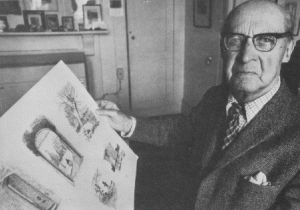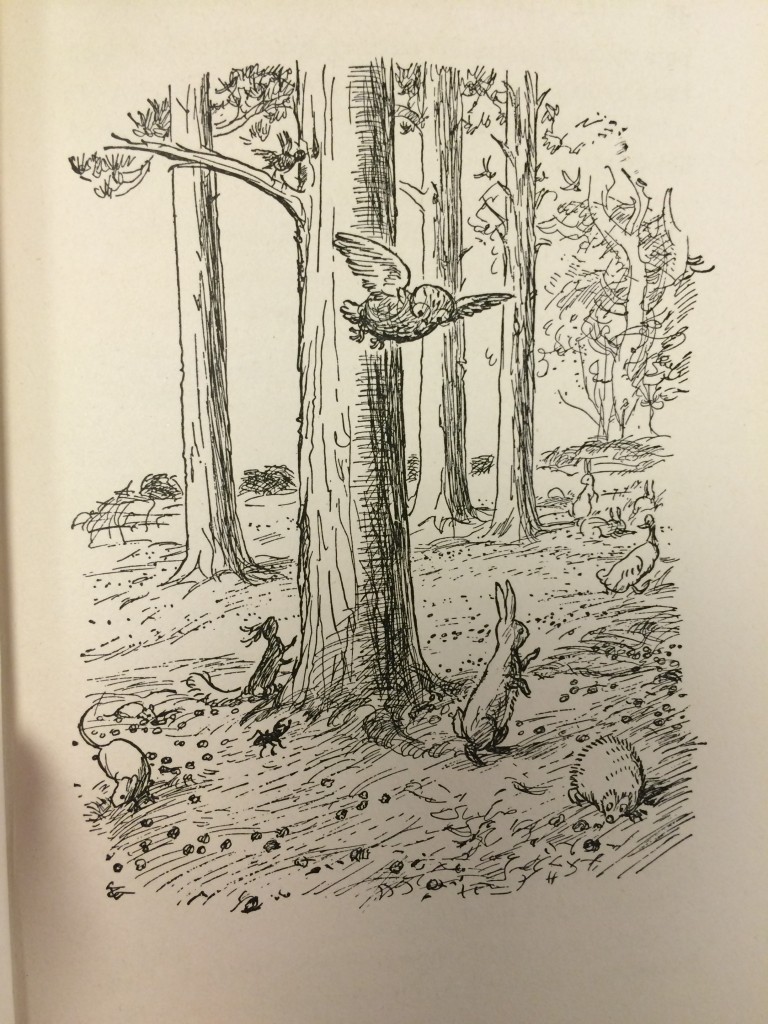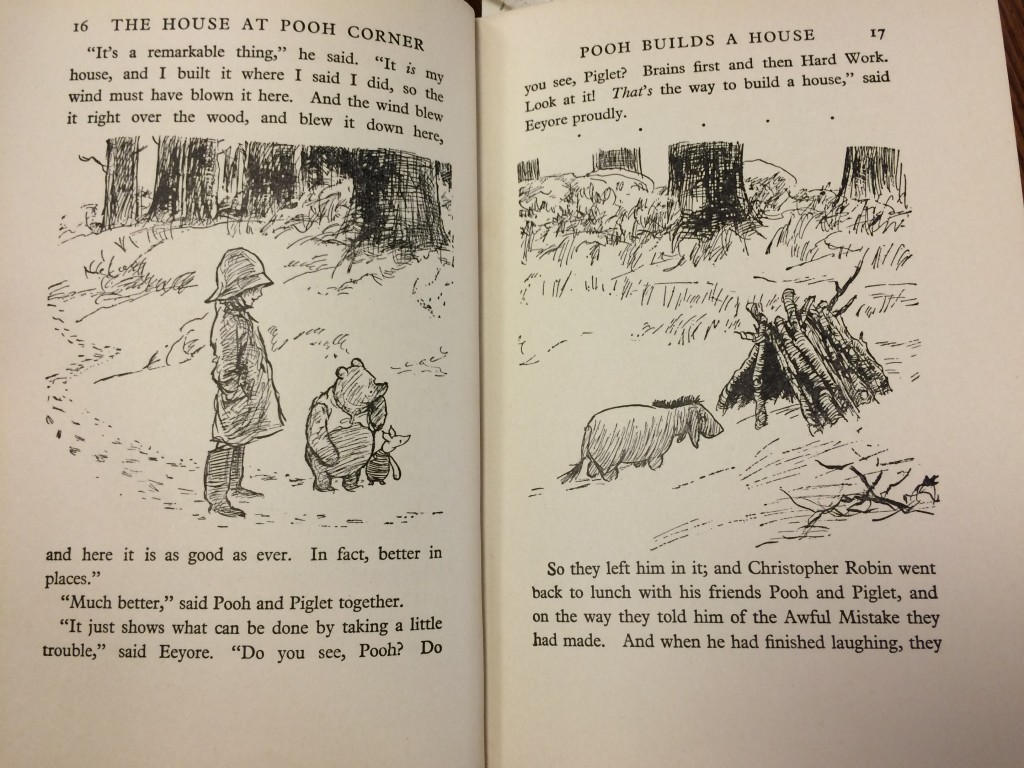
E.H. Shepard in studio.
Ernest H. Shepard is perhaps best remembered for the illustrations he created for A. A. Milne’s children’s books, specifically the Winnie-the-Pooh books. Born in London on December 10, 1879, Shepard grew up enjoying two hobbies in his life: observing soldiers as they practiced, and drawing. Shepard eventually pursued the latter hobby as a career, attending the Royal Academy School in 1987 to become an artist. An artistic sensibility seemed to run through Shepard’s family, as his maternal grandfather was a water colour painter, and his father encouraged him to continue with his artwork from a very young age.
His childhood interest in soldiers would later lead to his enlistment in the Royal Artillery during the First World War, where he served in France, Belgium and Italy. Due to Shepard’s efforts in the war, he earned the rank of Major and was awarded the Military Cross for bravery in the field. Even though he was on active duty, Shepard managed to draw sketches and illustrations depicting battle and military life at the front. Not even the war could separate him from his passion for drawing.
Shepard was formally invited to join the Punch’s Editorial Table as regular staff in 1921 and became a regular contributor of cartoons. It was at Punch where he met A. A. Milne. The story goes that when author A. A. Milne asked another member of the Punch Table, whom they would recommend to illustrate some children’s verse, he was directed to Shepard. However, Milne “was [first] reluctant to use Shepard, believing he did not have the style of draughtsmanship he wanted” (Benson) since Shepard was known for being a political cartoonist. Milne was eventually persuaded to use Shepard and was pleasantly surprised when the illustrator drew images to accompany his first book of poems, When We Were Very Young.

An illustration by E.H. Shepard from Milne’s The House at Pooh Corner (1928).
For illustrating the Winnie-the-Pooh books, Shepard turned to his son for inspiration, much like Milne drew inspiration from his own son for the character of Christopher Robin. The simple black-and-white line drawings of the lovable bear were originally modeled after Growler, a stuffed bear that belonged to his son, Graham. Shepard also based the environment of the Hundred Acre Wood on the setting and landscape of Milne’s homes in London and Sussex, since he lived on the edge of a forest.
Over time, Shepard’s delicate and economical line illustrations have become notoriously attached with the Pooh stories due to his ability to animate the spirit of the anthropomorphic Hundred Acre Woods characters and capture their toylike quality. His drawings of the boy character Christopher Robin especially resonate with audiences, as “they preserve the sense of constant motion that characterizes self-confident, inquisitive children” (Zipes). Through the use of clear and precise line, he is able to capture the features, personalities and moods of the characters in Winnie-the-Pooh. Despite the amount of praise and popularity his illustrations gained, Shepard eventually developed a growing resentment towards the figure of Winnie-the-Pooh, believing that his illustrations for the children’s book overshadowed his other work.

Another illustration done by Shepard